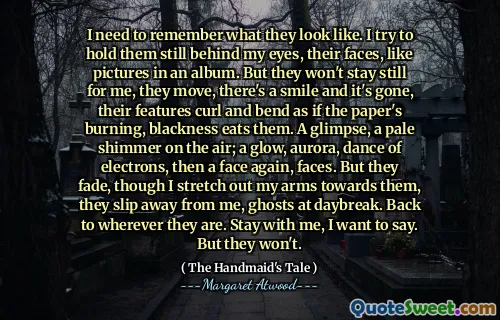I know why there is no glass, in front of the watercolor picture of blue irises, and why the window opens only partly and why the glass in it is shatter-proof. It isn't running away they're afraid of. We wouldn't get far. It's those other escapes, the ones you can open in yourself, given a cutting edge.
In Margaret Atwood's "The Handmaid's Tale," the narrator reflects on the reasons behind the absence of glass that usually protects a painting, the partially opened window, and the shatter-proof glass. These details symbolize a controlled environment where the potential for escape is impossible. It suggests that the literal fears of escaping aren't as daunting as the deeper, internal struggles faced by individuals.
The quote emphasizes that the true danger lies not in physical escape, but in the ability to confront and unleash one's inner turmoil. It presents a poignant commentary on the limitations imposed by society, illustrating how people can feel trapped not only by their surroundings but also by their own psyches. Atwood captures the complex relationship between confinement and self-liberation in a chilling and thought-provoking manner.
